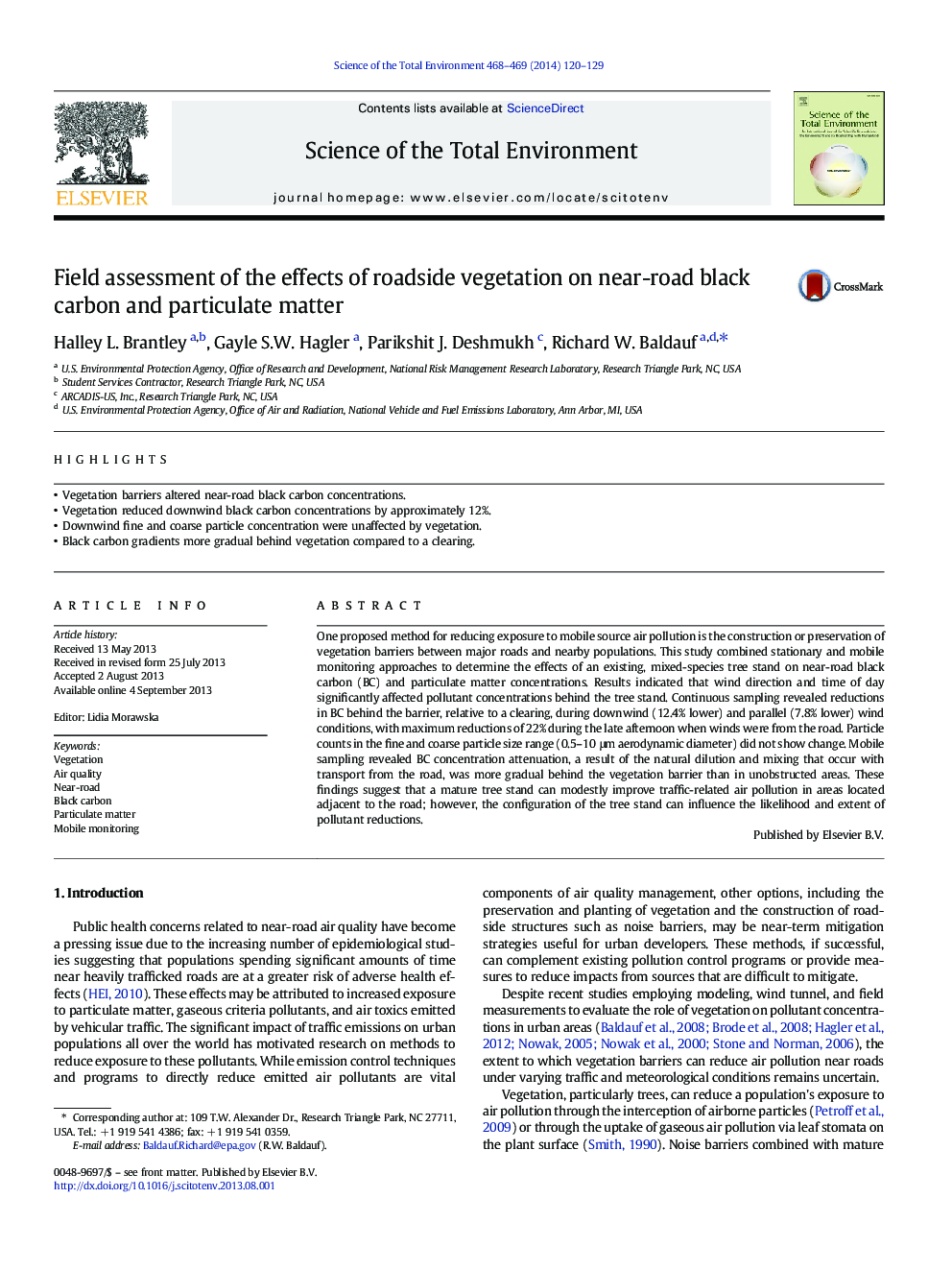| Article ID | Journal | Published Year | Pages | File Type |
|---|---|---|---|---|
| 6332442 | Science of The Total Environment | 2014 | 10 Pages |
â¢Vegetation barriers altered near-road black carbon concentrations.â¢Vegetation reduced downwind black carbon concentrations by approximately 12%.â¢Downwind fine and coarse particle concentration were unaffected by vegetation.â¢Black carbon gradients more gradual behind vegetation compared to a clearing.
One proposed method for reducing exposure to mobile source air pollution is the construction or preservation of vegetation barriers between major roads and nearby populations. This study combined stationary and mobile monitoring approaches to determine the effects of an existing, mixed-species tree stand on near-road black carbon (BC) and particulate matter concentrations. Results indicated that wind direction and time of day significantly affected pollutant concentrations behind the tree stand. Continuous sampling revealed reductions in BC behind the barrier, relative to a clearing, during downwind (12.4% lower) and parallel (7.8% lower) wind conditions, with maximum reductions of 22% during the late afternoon when winds were from the road. Particle counts in the fine and coarse particle size range (0.5-10 μm aerodynamic diameter) did not show change. Mobile sampling revealed BC concentration attenuation, a result of the natural dilution and mixing that occur with transport from the road, was more gradual behind the vegetation barrier than in unobstructed areas. These findings suggest that a mature tree stand can modestly improve traffic-related air pollution in areas located adjacent to the road; however, the configuration of the tree stand can influence the likelihood and extent of pollutant reductions.
